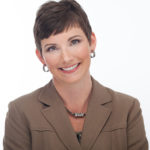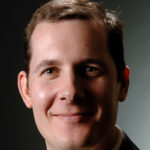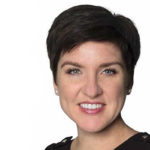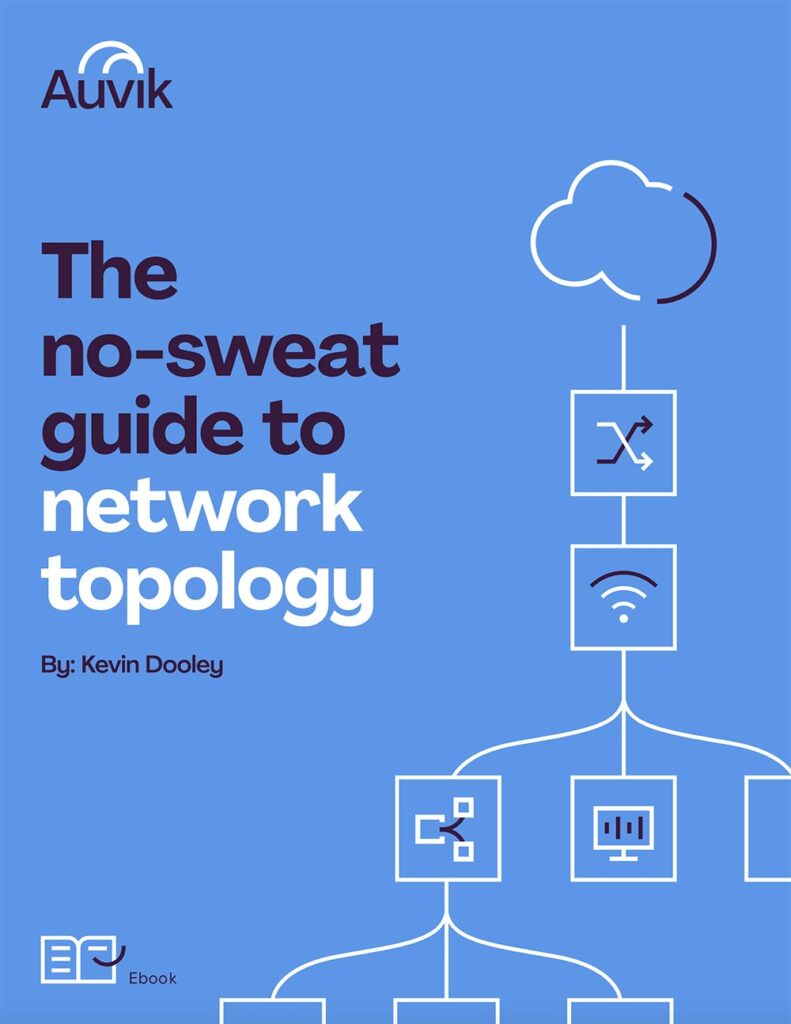Well, it’s a fresh new year. I always love this time in the calendar as a chance to take stock of the past 12 months and look ahead to what’s possible. Setting goals, making plans, and perhaps most of all trying new things, moving out of our comfort zones, pushing ourselves into new experiences.
With that in mind, we’re going to be changing things up a little with the Frankly MSP podcast in 2019. Starting today, we’re introducing a new segment at the top of the show called 1 Thing where we’ll share one thing that has made a difference in an MSP business.
Listen here
1 Thing
We kick things off with a tip from Ted Hulsy of Dropbox about managing your vendor relationships effectively by making sure someone is in charge of doing just that. This is an excerpt from Franky MSP episode 16.

“One thing I would recommend is somebody’s job description on the team should be vendor management. If you’re a 50-person MSP this might be a full-time job. But if you’re a 10 or 15-person company this might be one-third to one-half of somebody’s responsibility. There is—just let me be frank about there is a lot of grunt work. I mean going in and discovering all the Ts and Cs around somebody’s MDF program is a lot of work and it’s laborious. Make sure that you have somebody on staff who’s in charge of vendor relationships and is the one who’s going to invest the time to learn about, how do you get the volume incentive program from HPE or whatever it is, make that somebody’s responsibility on your staff.”
So there you have it, 1 Thing you can do in 2019 to help move your MSP business forward – make sure someone is focused on managing your vendors.
Normally this is the part of the show where I feature an interview with an MSP or industry expert. This interview segment isn’t going away—we do have some great guests lined up for you in 2019—and in fact, we’re going to devote a little more time to the interviews, which is something some of you have asked for.
But for this episode, I wanted to take a look back at some of the highlights from 2018. We published 25 interviews last year on everything from profitability levers to cultivating empathy in technical staff to predicting the future. And there was so much great content in there that I thought it worthwhile pulling out some of the more interesting insights to give you a quick start menu of ideas to think about or implement in 2019.
Let’s start our look back with a look ahead. In episode 011, I was joined by NY Times bestselling author and futurist Daniel Burrus to chat about predicting the future of technology. His point was that you need to anticipate what’s coming because reacting to what’s already happened—even if you react quickly—just doesn’t cut it anymore. He also explained the difference between hard and soft trends and how they can help you see what’s coming.

Daniel: “We know how to be agile. And every company has been working at being agile. But remember agility is reacting quickly after a disruption occurs, after a problem occurs, and because we’re experiencing exponentially growing technology-driven change, change is accelerating. So if all you’re doing is reacting fast, you have less value from being agile. Every year.”
Jennifer: “Flash Foresight is your best seller, published in 2011, which outlines the principles and framework that you use—and that you say anybody can use—to accurately forecast the future. Can you describe this system to us in a nutshell?”
Daniel: “Yes, this is based on 35 years of research and accurate predictions if you look at all of the seven books and thousands of articles, and that is how to separate hard trends—these are the trends that will happen, guaranteed, you can see them before they happen—from the soft trends. These are the ones that are based on an assumption about the future versus a future fact, which is a hard trend. So when you learn how to take any trend about the future and separate that which will happen from that which might happen, you can innovate with low risk because again you can see the disruptions before the disruption occurs. You are giving you a choice to be either disrupted or the disruptor and it takes you beyond really just reacting to change and really using it to anticipate it.”
Let me also say very quickly, hard trends and soft trends both have value. The value of a hard trend is you can turn disruption into an advantage because you can clearly see it ahead of time, see it coming. The soft trends—again, those are the ifs and maybes about the future—the beauty of those is if you don’t like them you can change them.”
By the way, if you’re in the US, Daniel tells you how to get a free hard copy of his newest book The Anticipatory Organization, which is all about using his forecasting and trend-reading techniques within a business. That’s in episode 11. So if you haven’t claimed your free book yet, go back and listen to that episode to find out how to do it.
Now let’s hear from Nigel Moore of the Tech Tribe about documentation. This is a perennial sore spot for many MSPs. But know that if you’ve been struggling to document your processes, you are not alone. In episode 008, Nigel shared how to overcome feelings of discouragement to reach your goals.

“It’s the old elephant. How do you eat an elephant is one bite at a time. And that’s kind of the thing that I see a lot throughout the community, the MSP community, is people look at documentation and they see it as this enormous enormous problem and this enormous thing to attack and it means that they don’t start because there’s all this overwhelm. And unfortunately that means most people just keep their ideas and their concepts and their checklists and whatever in their heads. And so the way we started is we we first started our first S.O.P was the SOP for how to create an SOP.
…My encouragement to people all the time is is don’t get overwhelmed when you look at the whole picture. Just start with five minutes a day, five maybe 10 minutes a day of documentation and every single person out there you’re lying to me if you can’t find five minutes a day in your business to be able to just work on something.
… Realize that it is a continual incremental process, that if you start today and you commit to continually incrementally improving over time, you will get through the process—or you won’t—you will never get through the process but you will get to a much better place than you currently are now. And that’s that’s a guarantee. That’s one thing that I can guarantee. You can’t go through and document and improve all these systems for 3, 6, 12, 18, 24 months and not be in a better place than when you currently are now.”
As Nigel says, all it takes is 5 or 10 minutes a day. That time accrues and is really going to help your business. In fact, Carolyn April of CompTIA spoke in episode 017 about just how important repeatable process is to an MSP. And once you’ve developed those processes, how important it is to automate as much as possible. Drawing on CompTIA research, Carolyn shared that the number one profitability killer in MSPs is… you guessed it.. process and operational inefficiency.

“Anything you can do to do process efficiency, anything you can do to automate as much process as possible and make those processes repeatable is another priority that is showing in the data that we got back from this study so i think that’s important.
That extends to very process you can think of in your organization from H.R., recruiting and hiring and onboarding new hires to how you deal with your customers in terms of billing and helpdesk and transactions. All of that needs to be automated and repeatable in order for you to to reap the best margins. I’d say that was the other thing that we really learned from this study is one of the big problems for many of these companies is their top line revenue could be really you know going gangbusters. They’re doing well in terms of bringing in new customers but because their organizations run inefficiently, they’re just leaking margin left and right on their profitability.”
Speaking of profitability, Rex Frank of Sea-Level Operations joined us in episode 010 to talk about the 4 service margin levers an MSP owner or service desk manager can control. Here he is talking about the very important and often overlooked fourth lever.

“That fourth lever is this agreement efficiency ratio and what that ratio is, you know, the quickest way I can describe it is if the client pays us a $1,000 flat fee for the month and we go out and do a $1,000 worth of work at our normal billing rates against that contract we’d be at a 1.0 efficiency.
If we go out and do $2,000 worth of work to get that thousand dollars the client paid us, we’re at a .5 efficiency. If we can go out and earn that $1,000 only doing $500 worth of work, we’re at a 2.0 efficiency. What I’m looking for when I’m managing my agreement efficiencies, I’m looking for a 1.25. That means we’re doing $800 worth of work to earn that $1,000 fee.
… When you’re looking at a service department where you’re not getting the margins that you’re looking for, you’ve got to make some tough choices. And usually what’s happening is you’re completely overworked. Because you’re not getting enough revenue for the amount of work that you’re doing because your flat fee contracts are under water because of that fourth lever’s upside down that you’re thinking about hiring an engineer. I need to hire another engineer.
And I advocate that before you make that hire, you fire clients first. Get those hours back from your bad client so that you can use those hours to service your good clients where you are getting paid appropriately or your flat fees are working out.”
That’s right. Firing clients might actually help your business grow. So who on your books is losing you money? Well, to know that you have to keep good track of your staff’s time. We touched on the importance of tracking metrics in a number of episodes throughout the year. But when it comes to the nitty gritty of getting employees to complete timesheets, Beth Burnside of CMIT Solutions of Erie spoke to us in episode 004 about how to get your staff onside.

Beth: “You have no idea how much people are really utilized if they’re not tracking a 100 percent of the time that they’re working in a day. So that includes their administrative time. Or their triaging time. So I think utilization is a very touchy subject and can be a misnomer because most industry benchmarks and even inside that PSA, they’re really focusing on billable hours but as a managed service provider who does a significant percent of our business at a flat rate, that stuff is not billable. So we look at it as client-facing hours and non-client-facing hours. So every minute my staff spends is either directly servicing the client or they’re doing something else that would provide value to the client. We just can’t prove the value if they’re not documenting the time.”
Jennifer: “I know some MSPs have difficulties getting their staff to complete timesheets and track their time, so how do you do that with your staff?”
Beth: “I’ve never had a problem because it’s a condition of their employment with our company. I would say it’s you know we have a pretty distinct culture. We indoctrinate people to that culture from the very point of like our recruiting efforts and interviewing efforts. And it’s just part of their training. Part of their onboarding is watching a series of webinars from a consultant in our industry who, it’s like the top 10 must-dos with your PSA and one of them is you have to track all of your time and he presents it in such a wonderful format that when people understand your business and your business model and why you have to do things the way they need to be done, they really understand that and don’t fight that at all.”
In 2018, cybersecurity was a huge theme for MSPs and it will continue to be a massive topic of interest in 2019. You may remember way back in March when the city of Atlanta in the United States was hit with ransomware that essentially shut down all city services for the better part of a week.
Charles Weaver of the MSPAlliance joined me for an interview a couple of months later to talk about protecting public infrastructure and the massive opportunity that exists for MSPs to step up to those jobs. Here’s a bit of what he had to say.

“The opportunity I think is massive. And not only the opportunity but the…I would almost call it the obligation. The larger state governments, the federal government, they have long been if not outsourcing selectively they are aware of the ability to and the need to safeguard their data, safeguard their networks and systems.
Today you have the Department of Defense actively creating and implementing a cloud strategy. They’re using best of breed public cloud private cloud types of providers. But that really leaves the cities of Atlanta, the small municipalities, townships, the water treatment facilities, the… whatever municipality that exists out there globally, this should now be a wakeup call that you need to take as much care as the federal governments are taking to safeguard the data that you have and safeguard the networks that you operate and if you don’t have enough skill set internally—people power, tools, the software, the hardware to do it and the knowledge, then outsourcing is a not only legitimate but almost necessity.
They have to be able to do that and they have to know that the larger providers are not going to be there to do that for a small opportunity. It has to be the smaller MSPs stepping up and actually doing this
Now let’s switch gears for a minute and jump into a conversation about customer service with Barb Paluskiewicz of CDN Technologies. In episode 024, Barb talked about CDN’s customer service philosophy and her go-to source for training.

“When we hire people everybody does Disney training, and we do Disney training as a group, as a whole. And the reason why is because Disney is awesome. They are top of mind when it comes to customer service. And this aligns with our focus of being customer service focused. When you go to a Disney theme park or if you’ve done a Disney cruise, you feel really special. You know there is an entire company there working together to make a fantasy world become real for you. And they do everything that they can to make a positive experience for you.
And that’s really what I want to do for CDN’s customers. I want my customers to be happy. I want them to feel comfortable. I want them to feel welcome. I want them to feel appreciated because I’m thankful for them. I want them to know that their data and business systems are being monitored and cared for in a safe environment. I want my employees to have a positive working environment. I want my people to be happy. I want them to feel comfortable. I want them to know how to establish boundaries in a polite and professional manner to keep them safe and in control while they are managing other people’s expectations. /1m 17sec
…Employee service actions, they need to be genuine and delivering service is not just about the way people do it but it’s about how they do it. And I think that the Disney training provides me a very clear route to get these technical right minded people understanding that. Our common purpose at CDN Technologies is to provide exceptional customer service with our customers and make sure our interactions with our customers are always interpreted to be positive. I don’t mind when a tech or someone is off task as long as they’re on purpose and that’s always ensuring that the customer is receiving a positive experience with interacting with us and Disney’s training has helped that.”
In 2018, we also dove into some sales and marketing topics on the podcast. Notably, Jamie Warner of eNerds had this fantastic idea for generating a significant annual revenue bump with a group buy campaign.

“I have never met an MSP that’s doing this and that is to run a Dell or an HP group buy campaign. I’ve never met one. I keep telling people about it. No one does it but every year your MSP will have around 25 percent of their desktops and laptops over the age of four years old. That’s just maths right. So if you have that scenario those devices are ripe for upgrade.
And so what we do is we run a campaign with Dell or HP to buy at a huge discount. So we basically say to these vendors, give us really low pricing, we’re going to have three laptops, three desktops and the reason we have three is you guessed it—it’s good better best. So we have good and better close together in price and then the best one is way out the side as an anchor price. And we’re going to run a campaign over three months.
We send a report of these devices to each customer and say hey here’s a report, using your RMM tools to produce it. You then highlight the ones that are fine in green, highlight the ones that are not at four years yet, that are getting close, in yellow ,and the ones that are over 4 years we put in red. It’s win win win because you’re creating huge savings for the customer.
Dell’s happy or HP is happy because they’re selling more than they ordinarily would in a shorter period of time, and it’s crazy margin. Like we’re getting at least $300 per device margin. But remember the customer’s saving off the list price, off the recommended retail, three four five six seven hundred dollars, like a thousand dollars in some instances because Dell’s margins—we use Dell—are enormous.
So everyone’s winning. Now our average turnover of that is about $250,000 to $350,00 every year in a three-month period. I believe any MSP could do this, just takes a little bit of effort to design the campaign, do a little brochure, have your three desktops, three laptops, and then email each customer and chase them up. But it’s a wonderful way. Everyone wins in that scenario.”
What do you think? Will you try Jamie’s group buy strategy in 2019?
Another very interesting approach is the one taken by Chris Rumpf of Flyght. Chris and his team have been working to turn all of their managed services into products. Chris told us in episode 022 that with a product version of your service what you deliver doesn’t change all that much but the positioning makes a big difference in the minds of clients.

“When we sell services people tend to always equate those services back to some semblance of an hourly cost to them or an hourly expense. And when we are able to productize services it makes us go in a situation where we’re having a conversation around value rather than hours. It changes the whole dynamic of the customer relationship.
… From a technical perspective there are some nuances in terms of what you’re automating and how your economies of scale are set up and what you’re doing from a backend perspective to continually show the value. But aside from those things, yeah I mean you’re still offering a firewall. You’re figuring out ways to minimize the amount of time that you’re spending internally on managing those devices but you’re still just offering a firewall like you would have before. The difference is for the end user and the customer that’s out there looking at it who has now a different way to see the field and a different way to see what is out there and what technology can do for them. And it simplifies the marketing process. It simplifies the sales process and it certainly makes things easier.”
And that’s a wrap. I encourage you to go back and listen to those past episodes in their entirety to get the full conversations and insights.
Subscribe
Like what you hear? Listen and subscribe.



